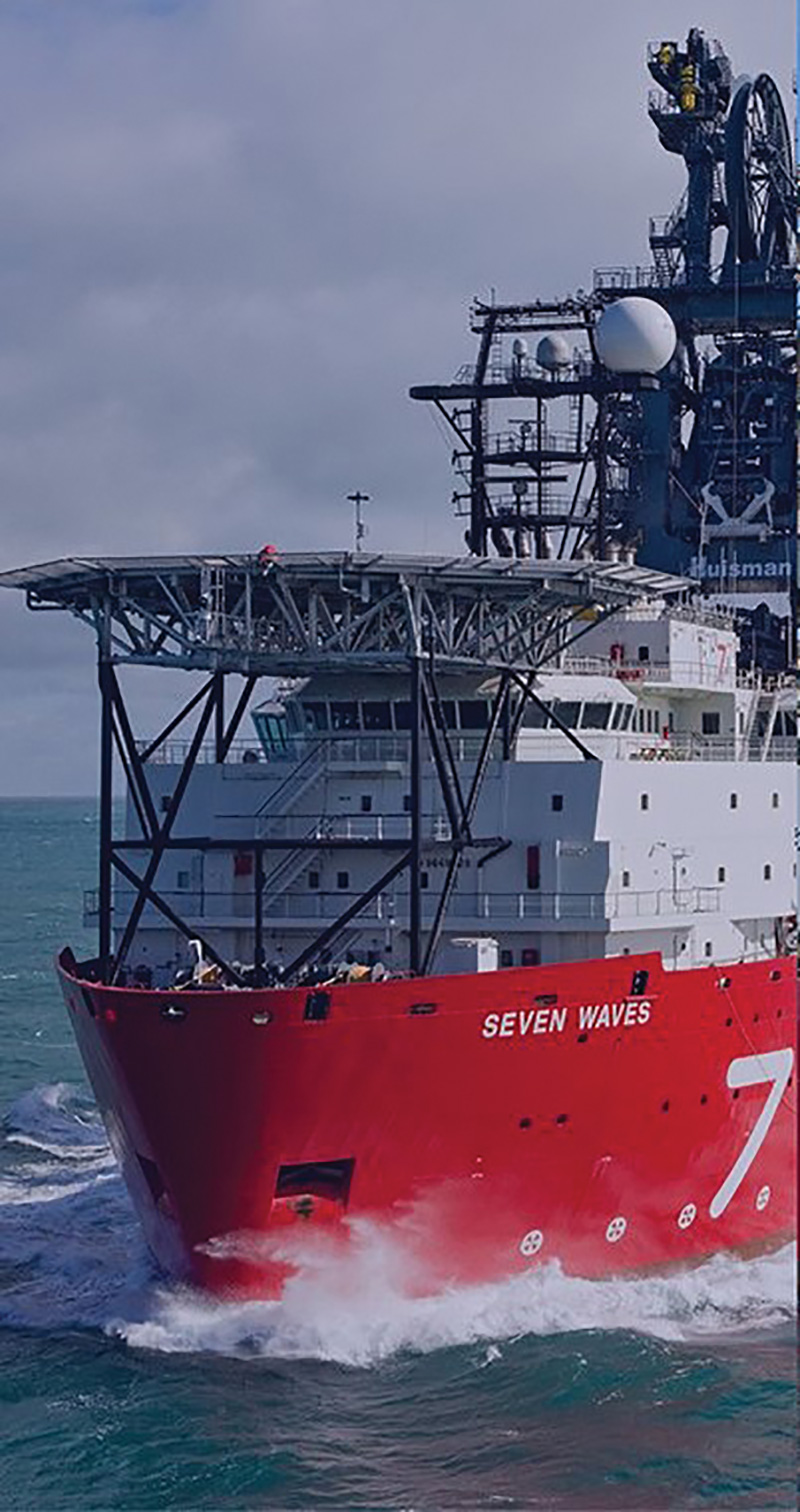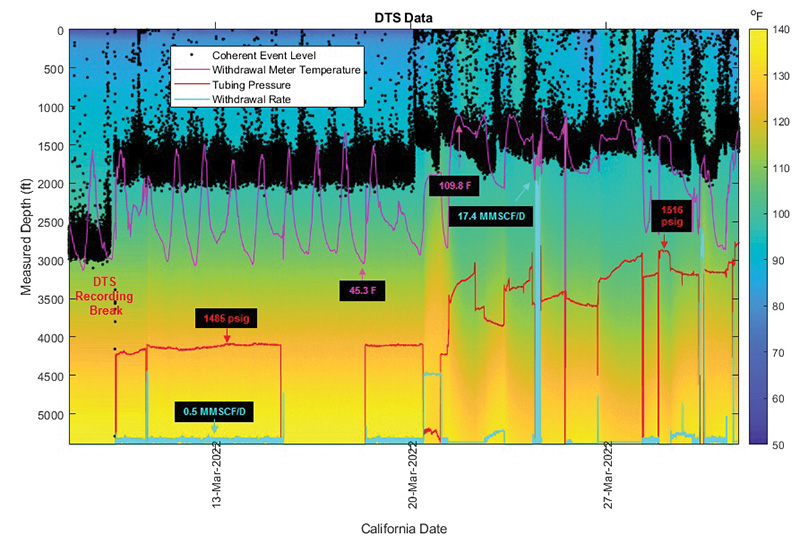October 2022, Vol. 249, No. 10
Tech Notes
Miros Wins Sensor Contracts for Subsea 7 Pipelay Support
Special to P&GJ
Miros Wins Sensor Contracts for Subsea 7 Pipelay Support
Miros Group has secured a trio of three-year agreements with Subsea 7 to install its IoT dry-sensor WaveSystem.
As part of project requirements to monitor wave and current to a water depth of 10 meters, WaveSystem will be installed on three of Subsea 7’s pipelay support vessels – Seven Waves, Seven Rio and Seven Sun – alongside access to Miros Cloud services delivering real-time sea state data.
“The cloud-enabled WaveSystem onboard our three pipelay support vessels allows us to deliver the best service to our customer independently of offshore weather conditions,” said Filipe Salvio, operations manager at Subsea 7. “This system provides us with accurate wave, current and speed through water data granting us to work safe, precise and highly effective at all times.”
The award follows an agreement between Subsea 7 and Petrobras in Brazil for new long-term, day-rate vessel contracts.
Each contract comprises a three-year period plus a subsequent one-year option. The contracts are due to begin between first-quarter and third-quarter 2022.
“We are thrilled to expand our services further to Subsea 7 by equipping Miros WaveSystem to the Seven Waves, Seven Rio and Seven Sun vessels,” Andrew Wallace, Miros’ VP Offshore Solutions said.
Fiber-Optic Cable Used to Overcome Monitoring Challenges
When California-based utility company Pacific Gas and Electric (PG&E) required a reliable system for monitoring a large underground gas storage field, it partnered with advanced sensing technology company Paulsson to seek research funding from California Energy Commission (CEC) and to develop and field test a real-time 24/7 monitoring system.
The CEC approved the proposal, resulting in a three-year research project that started in mid-2020.
Since installation, the system has achieved real-time gas flow detection and monitoring both in the well and in the formation, which is a world first for this type of application. The system has also recorded numerous small and large earthquakes from nearby faults and those as far away as Japan and Peru, providing valuable information about the unattended ground sensor (UGS) formation properties using these natural near and far seismic sources.
PG&E maintains more than 6,000 miles (10,000 km) of transmission pipelines, 42,000 miles (68,000 km) of distribution pipelines and three natural gas storage facilities.
PG&E’s largest gas storage field is based on McDonald Island, in the Sacramento-San Joaquin River Delta, in California. It has a maximum capacity of 82 Bcf (2.3 Bcm) and can provide 25 percent of Northern California’s winter peak-day gas demand.
There are 87 total wells, 81 of which operate for injection and withdrawal; the other six operate as observation wells. When gas demand is low, gas is injected into underground storage facilities. When demand is highest during winter months, dry hydro-drought years and a hot summer’s AC peak, gas is withdrawn to generate electric power.
Challenging Conditions
Monitoring of gas storage fields is vital to ensure the safety, optimize operations and to protect shareholders and ratepayers from disruptions.
Paulsson offers fiber-optic acoustic and vector seismic sensors, as well as distributed temperature sensors (DTS) and distributed strain sensor (DSS) technologies. The company has many years of experience developing, deploying and processing data from high-pressure and temperature non-electronic all-optical sensor arrays capable of operating at pressures up to 25,000 psi and at temperatures up to 600°F (~320°C) in both vertical and horizontal boreholes.
How DAS Works
Fotech’s Helios Distributed Acoustic Sensor (DAS) solution essentially turns a fiber-optic cable running alongside horizontal gas pipelines or vertical gas or geothermal wells into thousands of vibration sensors, able to detect any disturbances along the length of the pipeline or the well casing.
The technology sends thousands of pulses of light along the fiber-optic cable every second and monitors the fine pattern of light scattered back. When acoustic or vibrational energy – such as that created by gas flow in the well or in the formation – creates a minute strain on the optical fiber, this changes the back-scattered light pattern. By using advanced algorithms and processing techniques, DAS records these changes to identify and to categorize any disturbance in real-time, allowing immediate processing and interpretation – and if needed – corrective action to be taken.
“Each type of disturbance has its own signature, and the technology can tell an operator, in real-time, what happened, exactly where it happened and when it happened,” said Steve Cammish, chief technology officer at Fotech. “What’s more, DAS provides continuous monitoring 24/7 and over long distances of up to 100 kilometers [62 miles] along pipelines or along and near the deepest wells drilled.”
Detecting Gas Flow
The solution for PG&E required a fiber-optic cable attached to the 4.5-inch outer diameter (OD) production tubulars, which were lowered down a wellbore inside the 8 5/8-inch casing for 1.2 miles (2 km). Using DAS, the array effectively consists of approximately 2,500 sensors, providing accurate real-time monitoring that makes real-time processing, interpretation and action possible.
Having this volume of sensors means Paulsson was able to effectively create a large aperture acoustic antenna so flow in the gas field wells and in the geological formation where the gas is stored, as well as any other events, can be detected and pinpointed to within a meter.
DAS also enables differentiation between the high-permeability sandstone layers and the low-permeability shale so a dynamic model of the gas storage field formation can be built.
Traditionally, geophones, spatially separated by about 50 feet (15 meters) or more, have been used in such applications, but the conditions in boreholes are extremely demanding with high pressures and elevated temperatures. Another critical aspect is the need to be able to record the high seismic frequencies found in the sub-surface below the weathering zone.
Total Visibility
It is not only gas that can be detected and monitored but also earthquake events on the other side of the Pacific Ocean in Fukushima, Japan, and in Peru, South America.
DAS has wide applications across the oil and gas industry, including providing advanced monitoring for pipelines. It reliably detects leaks and third-party inference, such as theft attempts.







Comments